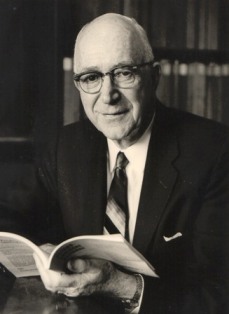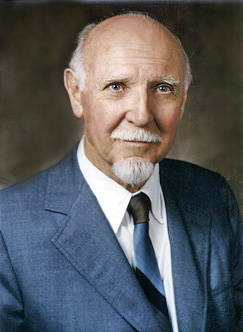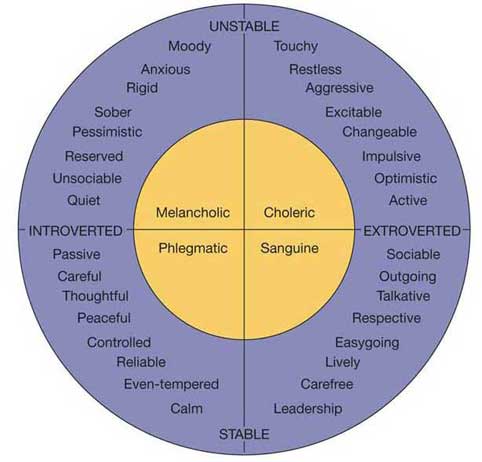2. Personality -Trait Theories
| Site: | MoodleHUB.ca 🍁 |
| Course: | Personal Psychology 20-RVS |
| Book: | 2. Personality -Trait Theories |
| Printed by: | Guest user |
| Date: | Friday, 26 December 2025, 9:33 AM |
Description
This book introduces Allport, Cattell, Eysenck
Personality
Watch the following videos as a brief introduction to personalities...
Introduction to Trait Theory
Trait Theory - Gordon Allport
The trait theory approach to personality started as a rejection of the popular pychoanalytical and humanistc view.
Allport's theory of personality emphasizes the uniqueness of the individual and the internal cognitive and motivational processes that influence behavior. For example, intelligence, temperament, habits, skills, attitudes, and traits.
Allport (1937) believes that personality is biologically determined at birth, and shaped by a person's environmental experiences.
Trait theories suggest that personality can be studied and described using a selection of traits, or descriptions.
 Gordon Allport started this movement by reducing a list of over 15000 adjectives that could describe individuals to just over 4000 words describing personalities. He organized those into three major categories:
Gordon Allport started this movement by reducing a list of over 15000 adjectives that could describe individuals to just over 4000 words describing personalities. He organized those into three major categories:
| Cardinal Traits |
A trait that dominates an individual's entire personality. Cardinal traits are thought to be quite rare. |
| Central Traits |
Common traits that make up our personalities. Traits such as kindness, honesty, and friendliness |
| SeconaryTraits |
Traits that are only present under certain conditions and circumstances. For example: getting nervous before delivering a speech to a large group of people, or becoming anxious before a test |
Trait Theory - Raymond Catell
Raymond Cattell (1905–1998) was another prominent personality theorist. From his experience, Catell was able to mathematically examine personality traits. Using a method of factor analysis, Catell narrowed the large list developed by Allport, to a more concise list of 16 personality factors.
Cattell made a distinction between source and surface traits. Surface traits are very obvious and can be easily identified by other people, whereas source traits are less visible to other people and appear to underlie several different aspects of behavior. Cattell regarded source traits are more important in describing personality than surface traits.

Catell published this theory in 1949, which was later refined into what is known as the 16 PF personality theory. Each of the 16 traits are applied to a person on a scale, some people being at either end of the scale.
| Cattell's 16 traits | |||||||||||||||||||||||||||||||||||
 |
|
||||||||||||||||||||||||||||||||||
Trait theories and Eysenck

Hans Eysenck was born in Germany and moved to England to study when he was 18. Through his years of study as a psychologist, he wrote many books and articles .
During 1940s Eysenck was working at the Maudsley psychiatric hospital in London. His job was to make an initial assessment of each patient before their mental disorder was diagnosed by a psychiatrist. Through this position he compiled a battery of questions about behavior, which he latter applied to 700 soldiers who were being treated for neurotic disorders at the hospital (Eysenck (1947).
He used a technique called factor analysis. This technique reduces behavior to a number of factors which can be grouped together under separate headings, called dimensions.
Eysenck (1947) found that their behavior could be represented by two dimensions: Introversion / Extroversion (E); Neuroticism / Stability (N). Eysenck called these second-order personality traits.
IntroversionExtraversion and Neuroticism/Emotional Stability scales

Trait theory and intro to personality tests
Trait theory focuses on individual characteristics, and focuses less on the "Why" of behaviour. In this section we will look at the types of traits and the ways they are assessed.
Personality has been assessed in many different ways. Observations, surveys, pencil and paper tests, and projective tests.
